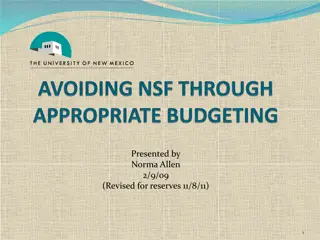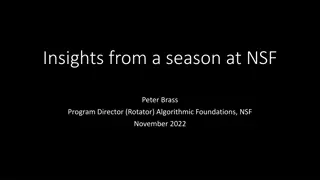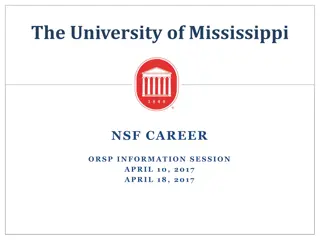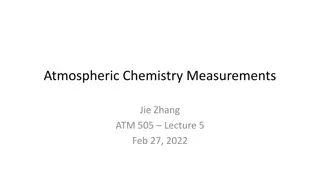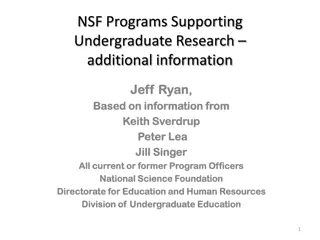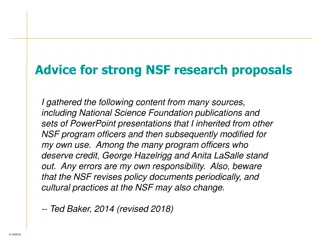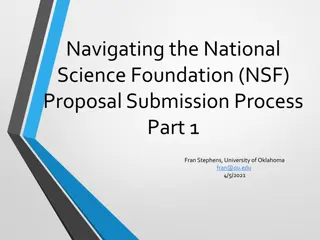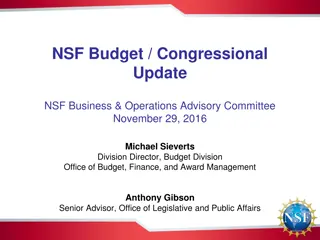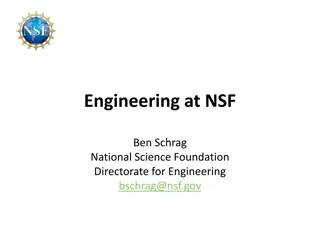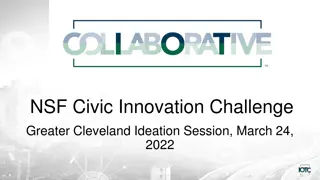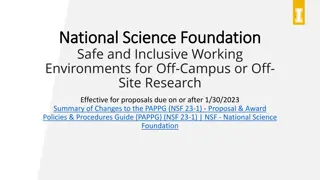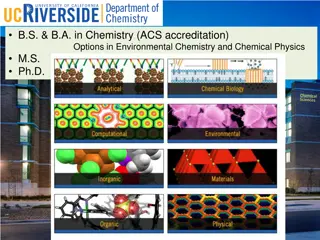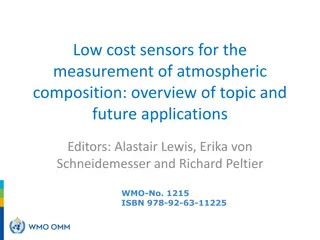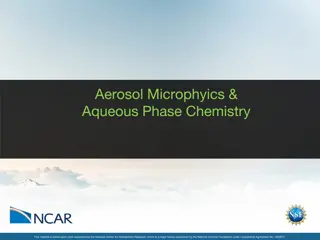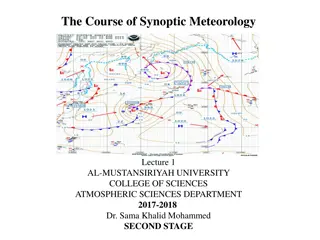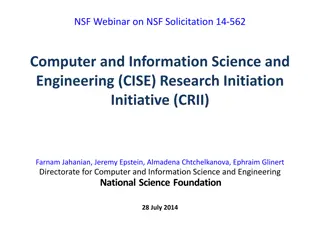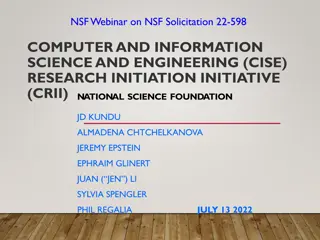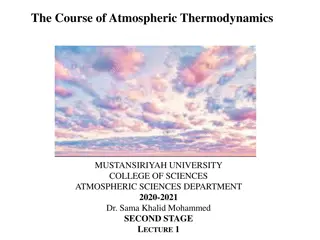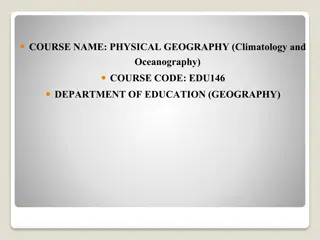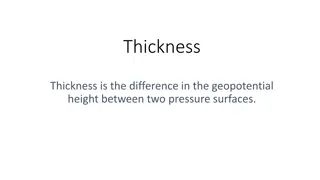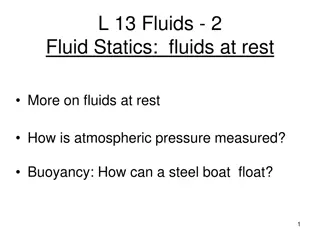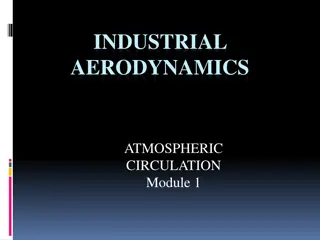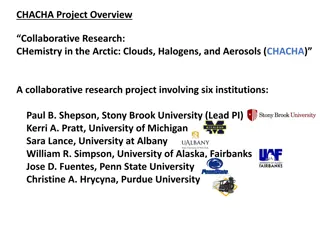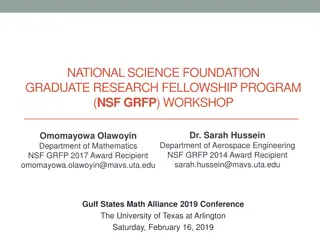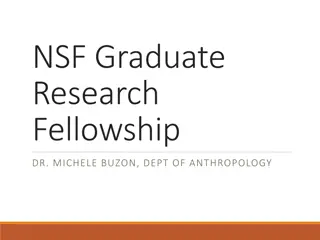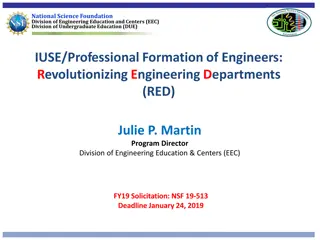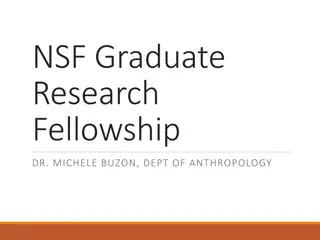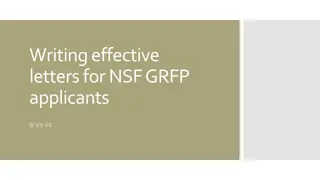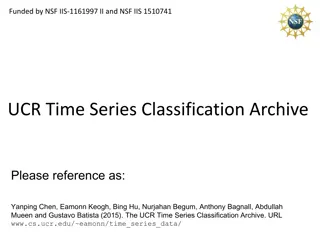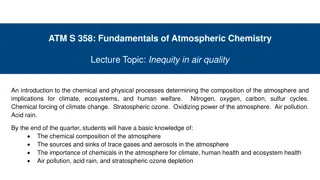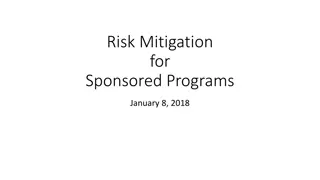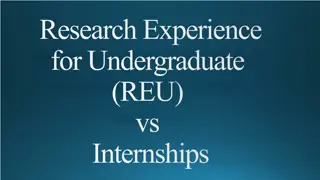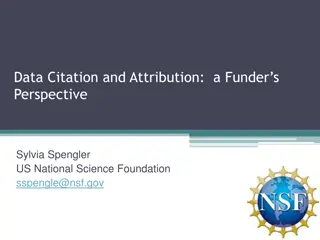NSF Atmospheric Chemistry Program Overview
The NSF Atmospheric Chemistry Program aims to characterize the chemical composition of the atmosphere, understand chemical processes, quantify fluxes of chemical substances, study natural and anthropogenic causes of variability, and assess impacts on climate. The program supports research through peer-reviewed proposals and engages in various field campaigns, data campaigns, workshops, and research projects. Additionally, other NSF programs such as ECS, EE, and CLD also support atmospheric chemistry research.
Download Presentation

Please find below an Image/Link to download the presentation.
The content on the website is provided AS IS for your information and personal use only. It may not be sold, licensed, or shared on other websites without obtaining consent from the author. Download presentation by click this link. If you encounter any issues during the download, it is possible that the publisher has removed the file from their server.
E N D
Presentation Transcript
A Workshop for the NSF Atmospheric Chemistry Community
The NSF Atmospheric Chemistry Program Characterize the chemical composition of the atmosphere and its variability; Understand the processes by which chemical species react and are transported in the atmosphere; Quantify the major fluxes of a wide variety of chemical substances into and out of the atmosphere, and to understand the processes controlling those fluxes; Understand the natural and anthropogenic causes of atmospheric chemical variability, and the effects of chemical change on climate; and Characterize the oxidative capacity of the atmosphere and its variability.
Other Programs at NSF that support atmospheric chemistry research: Environmental Chemical Sciences (ECS) Environmental Engineering (EE) Chemical, Bioengineering, Environmental and Transport Systems (CBET) Climate and Large Scale Dynamics (CLD) Physical and Dynamic Meteorology (PDM) Arctic Natural Sciences (ANS) Antarctic Ocean and Atmospheric Sciences (AOAS) Chemical Oceanography (CO) Biological Oceanography (BO) Ecosystem Science (ES)
Reviewing Proposals The peer review system ensures that NSF supports the best science possible. In the Atmospheric Chemistry Program ~ 70 Proposals each year need to be reviewed; 5 reviewers per proposal; 350 review requests each year
ATC Statistics FY17 FY16 FY15 Regular Proposals Received (individual) 82 95 85 Regular Projects Received (Collabs=1) 56 77 63 Regular Projects Funded 21 36 31 Regular Projects Declined 35 41 32 Fund Rate 37% 47% 49% Field Campaigns Supported 5 1 (co-funded) 1 (co-funded) Field Campaigns Declined 4 0 1 Data Campaigns Supported 1 0 0 Workshops Supported 7 6 8 RAPIDS Supported 1 2 2 EAGERs Supported 0 1 1 CAREERS Received (new) 5 9 10 CAREERs Supported 3 4 2 CAREERs Declined 2 5 8 CAREERs Continuing 10 10 10 PRFs Supported 3 4 3 PRFs Declined 0 14 7 PRFs Year 2 4 3 4 REU Sites Funded 0 0 0 MRIs Supported 2 1 3 MRIs Declined 1 3 0
PROGRAM CONTACTS https://www.nsf.gov/funding/pgm_summ.jsp?pims_id=11692 PROGRAM DIRECTORS: Sylvia Edgerton sedgerto@nsf.gov New Program Director ??????? PROGRAM ADMINISTRATOR: Darryl Harris dwharris@nsf.gov (703) 292-8522 Phone: FAX: (703) 292-9022 Proposals to the Atmospheric Chemistry Program are welcome at any time


